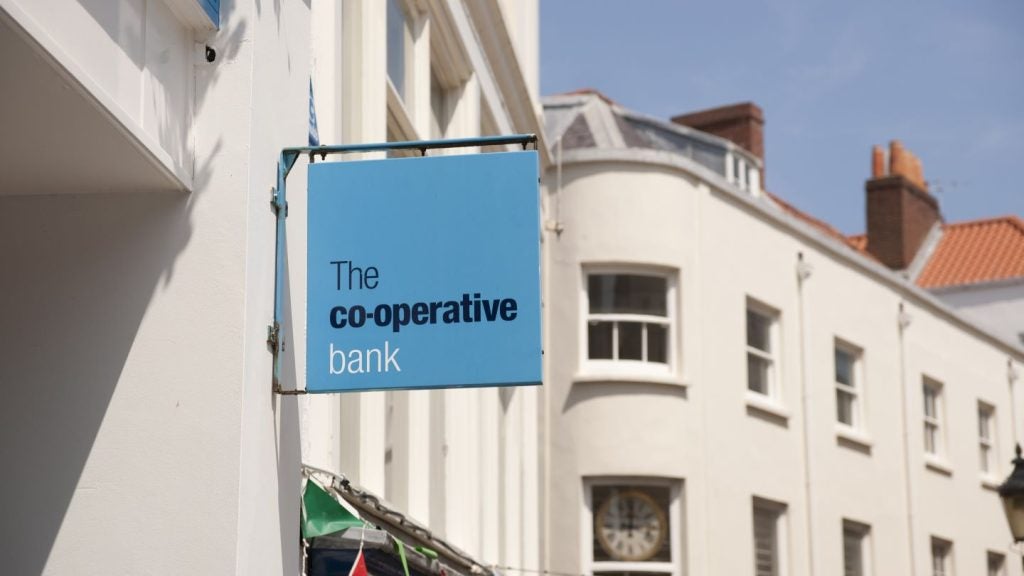banking heavyweight in 2007. In its 150th year, it made a record
profit of $14.2 billion, was instrumental in the $103 billion
takeover of ABN AMRO and, according to its own figures, now runs
the largest international branch network. Hugh Fasken talks to its
CEO, Alfredo Sáenz. When asked about the sale of Banca Antonveneta for a
€3 billion ($4.74 billion) profit just days after buying it,
Alfredo Sáenz, CEO of Santander, says: “No, we have no regrets at
all. To the contrary, we remain as convinced as ever that it was
the right thing to do.
“As we said at the time, the Italian banking market is attractive
and Antonveneta is a very good bank, but without the scale needed
to extract all the potential from our banking model we would have
had to make considerable further investments to obtain that scale.
The offer we received for Antonveneta allowed us to immediately
realise the synergies we had planned, without incurring the
execution risk. It was a good opportunity to create value for
Santander shareholders, so we took it.”
The decisive, lucrative deal to sell Antonveneta to Banca Monte dei
Paschi di Siena stands out in a stand-out year for Spain’s largest
banking group (see A big deal).
In its 150th year, the group made a record profit of €9.06 billion,
up 19 percent on 2006. Revenues grew by 21 percent, driven by
growth in volumes of 12 percent and price management, to €27.1
billion. Revenues grew at twice the rate of costs, which increased
by 10 percent, allowing net operating income to increase by 32
percent to €14.8 billion. The increase in costs was linked to the
opening of a net 326 new branches, bringing the total number of
branches in the Santander network to 11,178, making it the largest
retail banking distribution franchise in the Western world. Once
ABN AMRO’s Banco Real in Brazil is integrated, the group will have
more than 13,000 branches.
Sáenz remains wholly bullish about the benchmark ABN AMRO
acquisition. “The initial stages are going well. The consortium
partners submitted in December detailed plans to the Dutch National
Bank for the separation and integration of the ABN AMRO Group. We
are confident we will be able to separate Banco Real and the other
Latin American assets from ABN and begin their transition into
Santander from the third quarter of this year,” he says.
How well do you really know your competitors?
Access the most comprehensive Company Profiles on the market, powered by GlobalData. Save hours of research. Gain competitive edge.

Thank you!
Your download email will arrive shortly
Not ready to buy yet? Download a free sample
We are confident about the unique quality of our Company Profiles. However, we want you to make the most beneficial decision for your business, so we offer a free sample that you can download by submitting the below form
By GlobalDataCentral to the Santander business plan
Brazil, Mexico and the wider South American markets have become
central to the Santander business plan. In Latin America,
attributable profit rose by 27 percent in dollar terms in 2007 to
$3.65 billion (in euros, attributable profit was €2.67 billion, up
17 percent). The greatest contribution was made by Brazil, which
rose by 32 percent, to $1.24 billion; it was followed by Mexico,
with an increase of 35 percent to $894 million, and Chile, where
attributable profit increased by 29 percent to $743 million.
Loan volume in Latin America came to €68.8 billion, an increase of
14 percent in euros and 20 percent in local currencies. Brazil,
which opened 78 branches last year, increased lending by 32
percent, with growth of 28 percent in lending to individuals and 41
percent to SMEs. “Despite being an emerging market, Brazil is a
very competitive banking market with excellent, large banks. They
have been innovative and flexible, and I would expect the
competitiveness of the Brazilian banks to continue to improve,”
says Sáenz.
“For Santander, growth in Brazil will come from two areas: firstly,
the synergies and economies of scale we will realise by integrating
Santander and Banco Real; and, secondly, the organic growth and
increased market share we expect as we create a stronger competitor
to the traditional local leaders. In terms of segments, we see room
for growth across a wide range of products and business lines,
including customer lending and consumer finance, cards, asset
management and wholesale banking.”
BBVA, Santander’s great Spanish rival, solidified its strong
position in the US in 2007, focusing its effort on the relatively
strong Texas market. Asked about Santander’s exposure to North
America – in particular its 24.9 percent stake in the 18th-largest
US banking group, Sovereign Bancorp – and whether the weak dollar
and US banking environment constitute an opportunity for Santander
in the US, Sáenz says: “We consider the US market to be
interesting, as the investment in Sovereign shows. We are assessing
whether or not our customer-driven, branch-based model of retail
banking can provide us with a competitive edge there. It is still
too soon assess our options and opportunities in the US. In any
event, in Sovereign, we have an investment agreement that lasts
until 2011.”
Thus, the US may or may not be a core focus for the group going
forward. A direct result of the tricky US market, some €737 million
was assigned to an adjustment in the value of the investment in
Sovereign last year – and Sáenz is much clearer on the group’s
focus for now on Spain, continental Europe, the UK, Mexico and
Latin America, and on its commitment to retail banking. Retail
financial services contributed 80 percent of the group’s 2007
profit before tax, a percentage that Sáenz says will remain for the
foreseeable future. “We don’t expect a large deviation from the
current breakdown of retail versus wholesale banking at Santander.
We are a retail bank because we choose to be a retail bank. As a
retail bank, we can deliver reliable profit growth from highly
recurrent, geographically diversified sources of revenues. It is
what our shareholders have come to expect of us.”

An excellent consumer finance
franchise
If further acquisitions in the US are off the cards, what about in
other markets, in particular in Europe? Santander has an excellent
European consumer finance franchise, for instance – would it ever
be interested in expanding more into some of its main European
consumer finance markets such as Germany, perhaps via an
acquisition (ie, Deutsche Postbank)?
Sáenz dismisses talk of such a move but does agree that consumer
finance has worked very well for the group. “We are very pleased
with our current presence in Germany. The consumer finance segment
is an attractive one for us. We have excellent opportunities to
continue to grow organically, and/or through minor portfolio
purchases, without needing transformative acquisitions. Moreover,
though Santander always analyses the opportunities that are
presented to us, the scale and characteristics of the German market
make it very difficult for them to meet the financial and strategic
criteria we have set for the type of transaction you are asking
about.”
Group gross lending was €574.1 billion at the end of the year, up 8
percent. Continental Europe accounted for 55 percent of this
lending, the UK (Abbey) 33 percent, and Latin America the remaining
12 percent. In continental Europe, lending grew by 14 percent, to
€310.6 billion, with increases in all countries and units.
In Spain, lending grew by 13 percent, with mortgage business
slowing, however, to 11 percent – a possible sign of a Spanish
housing market slowdown. Lending via the Santander branch network
in Spain increased by 11 percent, Banesto by 21 percent, Portugal
by 6 percent and Santander Consumer Finance by 16 percent.
Santander Consumer Finance continued to expand, both organically
(with branch openings in Germany and Italy) and through selective
acquisitions (Drive in the US).

A tough fight on its hands
In its domestic retail banking market, Santander has a tough fight
on its hands. Not only is the Spanish economy looking like it
might, after a decade of unparalleled growth, cool down over the
next few years, the country has developed one of the most dynamic,
competitive banking industries in the world, with resurgent cajas
such as la Caixa battling it out with energised mid-tier banks such
as Banco Popular, Bankinter, Banco Pastor and Banco Sabadell – as
well as BBVA and Santander, the two biggest. Santander’s 2007
profit in Spain came in at €2.47 billion, 56 percent of European
group profit, underlining just how important its domestic market
remains.
Does Sáenz think the Spanish market is overbanked? “I would say
that no, Spain is not ‘overbanked’, but yes, there may be room for
consolidation. Spain is densely banked, as any first-time visitor
to Madrid will tell you after noticing bank branches on nearly
every street. However, that has only forced the banks and
cajas to be more efficient. But they are not losing money,
so we cannot really say Spain is ‘overbanked’… Still, if some
smaller banks or cajas find they don’t have the scale to
compete and best serve their customers, we could at some point see
more consolidation in Spain.”
What about the tougher times for the Spanish economy and possible
threats to Santander (and its sister network Banesto) from banks
such as Bankinter, Popular and la Caixa? “The Spanish market is one
of the most dynamic banking industries in the world but also one of
the most demanding in terms of competition and efficiency. That
helped prepare Santander for competition in other international
markets, including the UK after the purchase of Abbey.
“After years of growth in revenues of around 20 percent in Spain,
we see this slowing this year to around 10 percent, reflecting
slower expected economic growth. The outlook makes strict cost
control and risk management, two of Santander’s most basic values,
more important than ever. We believe that, with our Spanish branch
network, the best retail banking technology and an excellent level
of efficiency, we will be able to continue to make extremely
competitive offers to our customers.”
A big part of Santander’s domestic strategy has been to increase
marketing and product innovation with a view, primarily, to cross
sell more group products. In January, for instance, the Santander
branch network began offering what it said was the cheapest
mortgage loan in the market, at Euribor plus 0.25 percent. The
product aims to capture the very highest quality customers –
borrowers who have had a mortgage for six years or more.
In 2006 it rolled out its We Want To Be Your Bank customer
acquisition and retention strategy – and according to Sáenz, the
bank has since doubled the capture of new customers and halved
customer turnover. Customer complaints have fallen by more than 90
percent. The rate of cross-sell among customers covered by the plan
has gone up fourfold from pre-plan levels and, as of the end of
2007, 3.8 million customers were covered by We Want To Be Your
Bank. “We are delighted with the results,” concludes Sáenz.








